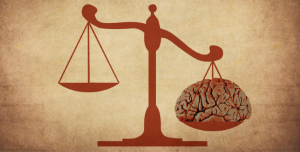
The American Psychology-Law Society (APLS; Division 41 of the American PsychologicalAssociation) met for its annual conference from March 6-8, 2014 in New Orleans, Louisiana. The conference unites North American forensic psychologists, graduate students, legal scholars, and academics in celebrating empirical advances in the field of psychology and law over the last year. This year was no different, especially in city ablaze in joyous celebration of Mardi Gras two days prior. Of particular interest this year were a number of presentations exploring neuroscientific research and implications for psychology and law, including a plenary session, CLBB-led panel, and paper presentation on juror decision-making.
The opening plenary session by Dr. Bruce Perry of the Child Trauma Academy explored a neurosequential model of therapeutics. Dr. Perry’s work aims to describe and treat childhood trauma from a neurodevelopmental and biological framework. He uses neuroscientific and neuropsychological advances to help parents, teachers, and evaluators understand how changes in the brain affect child behavior and may result in positive and negative long-term consequences. Dr. Perry’s work is aligned with the mission of CLBB, to use the latest scientific research to improve public welfare.
Ekaterina Pivovarova, PhD, CLBB research fellow and forensic psychologist, chaired a panel of experts discussing the Application of Neuroscientific Methods and Research to Psycho-Legal Questions. The first presenter, Lyn Gaudet-Kiehl, JD, MA, of the Mind Research Network, discussed the admissibility of neuroscientific evidence in court, specifically in potential for exclusion based on Federal Rules of Evidence 403 (i.e., exclusion of evidence that is prejudicial to the jury). Dr. Pivovarova explored research on detection of deception with functional Magnetic Resonance Imaging (fMRI), noting that findings of greater activation when lying are generally within broad neuronal networks. These findings suggest that deception may not necessarily have a distinct neuronal signature per se but rather be a function of higher cognitive processes. Gina Vincent, PhD of the University of Massachusetts Medical School and Joshua Buckholtz, PhD, CLBB faculty member and Harvard Psychology faculty, addressed the neuroscience of psychopathy. In Dr. Vincent’s research with juvenile offenders, offenders with the highest degree of psychopathic traits showed less activation and craving in response to pictures of drugs than the control group, and had less overall activation in the brain. Dr. Buckholtz presented finding from his research on incarcerated individuals with high psychopathic traits, which showed them to have increased striatal dopamine transmission, particularly in response to reward anticipation.
Scott Lilienfeld PhD of Emory University, the discussant for the panel, offered erudite feedback on each of the presentations as well as on the general application of neuroscientific research to psychology and law. He encouraged further empirical investigations but cautioned that the implications of admitting such evidence in court and practical utility of some research must be carefully considered. Drs. Lilienfeld and Buckholtz will have another opportunity to address this essential topic, alongside CLBB’s Joshua Greene at the CLBB symposium, Brainwashed?: What Neuroscience Can – and Can’t – Tell Us About Ourselves, at Harvard Medical School, on April 17, 2014.
Finally, several APLS researchers presented findings on juror decision-making with respect to neuroscientific evidence. Casey LaDuke of Drexel University found there were no differences in verdict outcomes by mock jurors when presented with neuroscientific, psychological, or neuropsychological evidence. Similarly, Elyse Mowle of Texas A&M University noted that her research with a large sample of mock jurors also produced no differences between different types of evidence, including neuroscientific images, as it related to length of sentencing. This research is consistent with other findings described here. Although initial studies found that jurors may have been unduly swayed by neuroscientific images, this finding has not held strong true in more recent studies. It is possible that the omnipresence of neuroimages in our lives, jurors no longer perceive it as distinct from other types of evidence proffered by experts in the courtroom.
Overall, the APLS annual conference once again offered plenty of learning opportunities, as well as ideas for pursuit of future research, with notable attention to the application and exploration of neuroscience. As Dr. Lilienfeld concluded, and most researchers would likely agree, the excitement surrounding advancing neuroscientific techniques should be harvested but also applied with significant caution to psycho-legal questions – a point that strongly resonates with CLBB research.
For more on APLS, read about the CLBB-led panel, Application of Neuroscience Research and Techniques to Forensic Psychology, see the 2013 Dispatch by Dr. Pivovarova, or visit the APLS conference site.



